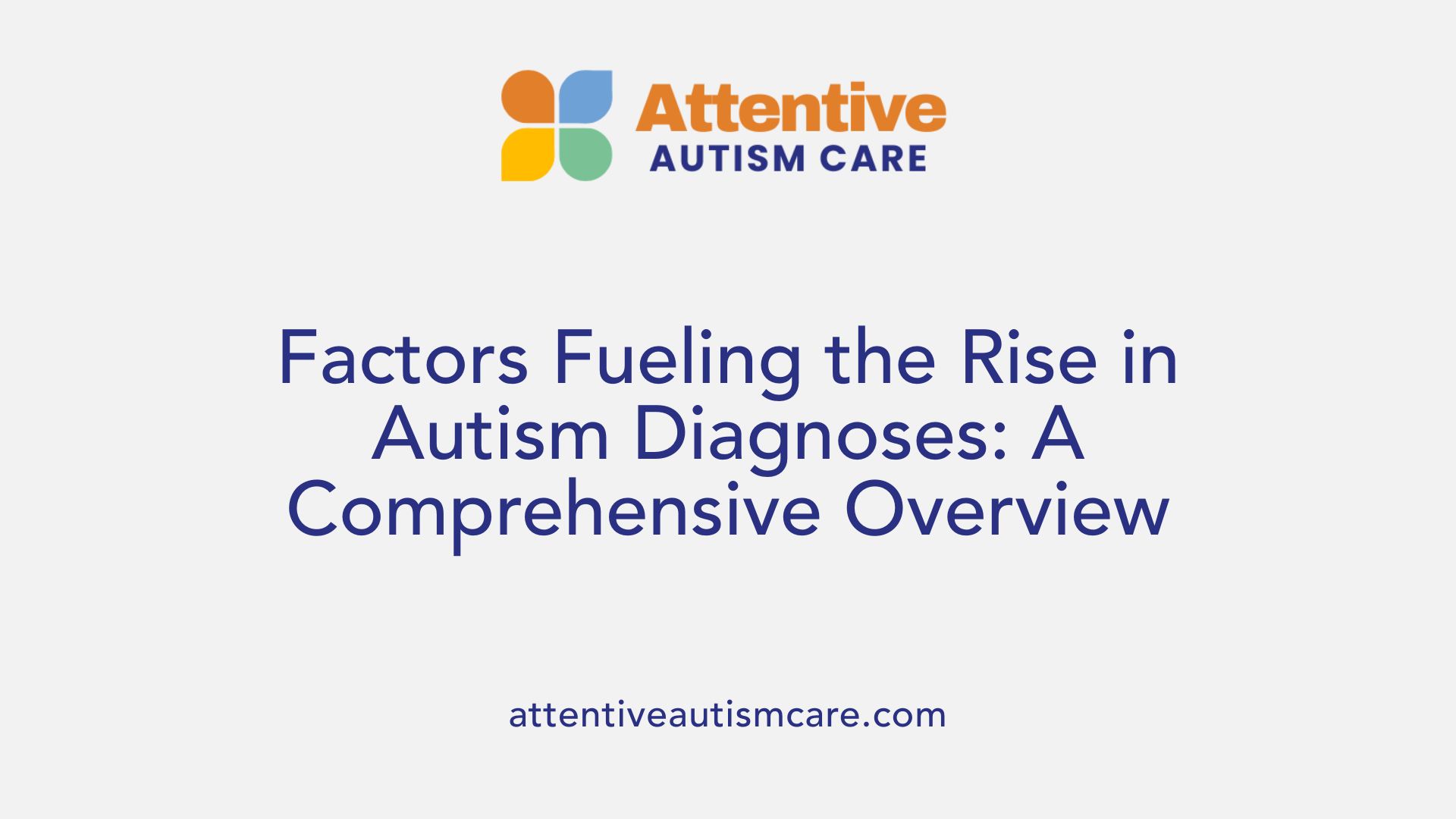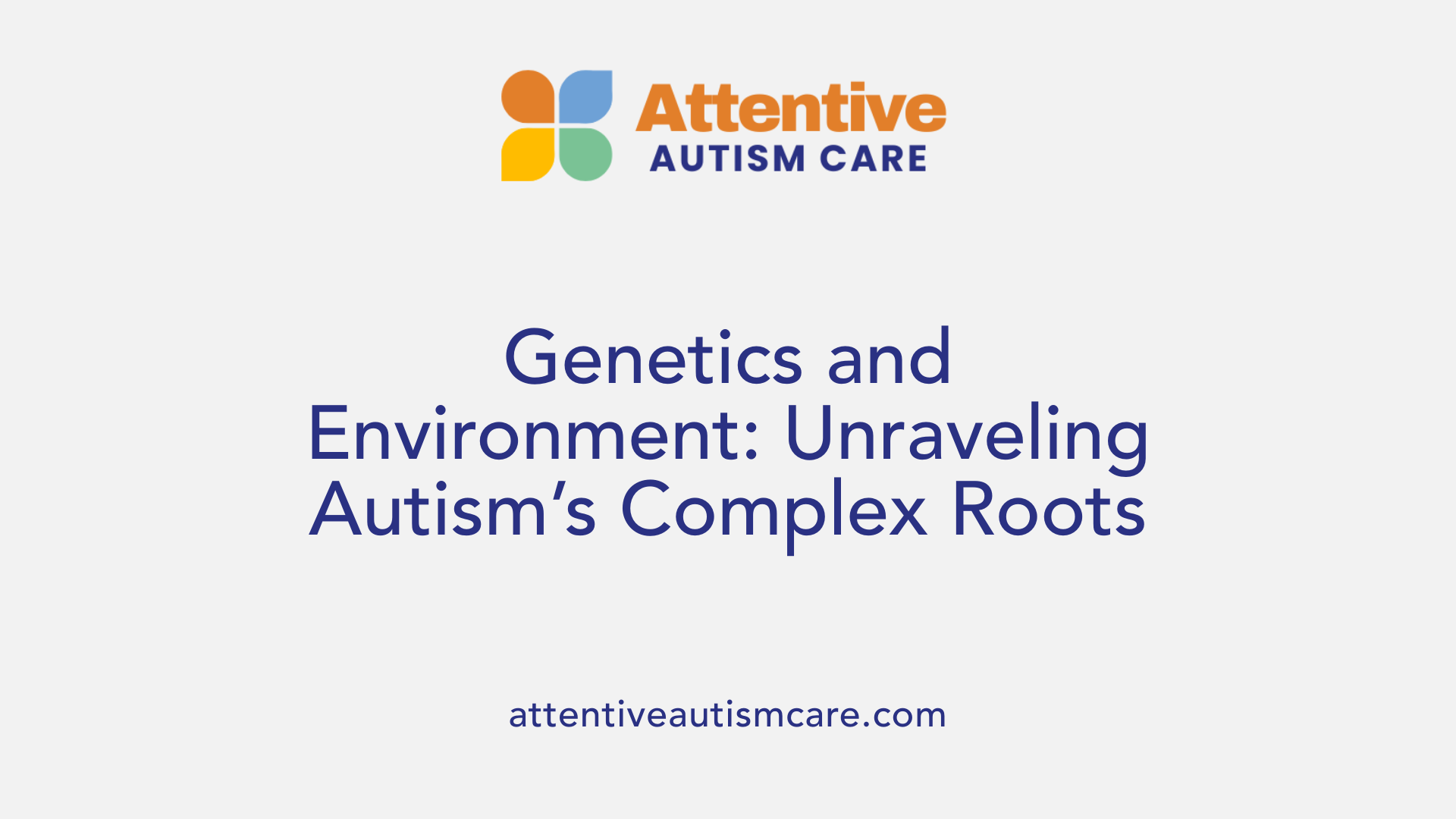Is Autism Overdiagnosed?
Unraveling the Rising Tide of Autism Diagnoses

Understanding the Complexity Behind Autism Diagnosis Trends
In recent years, autism diagnosis rates have skyrocketed, prompting widespread debate about whether autism is genuinely more prevalent or if we are witnessing an era of overdiagnosis. This article explores the recent trends, diagnostic challenges, genetic and environmental influences, and the implications of potential overdiagnosis, providing a comprehensive overview of where we stand in autism diagnostics today.
The Surge in Autism Diagnosis Rates: Trends and Contributing Factors

What are the recent trends and reasons behind the increase in autism diagnosis rates?
Over the past decade, autism diagnosis rates have skyrocketed globally, with estimates now suggesting that approximately 1 in 36 children are diagnosed with autism spectrum disorder (ASD). In the United States alone, the prevalence has increased by about 500% over the last 16 years, as reported by a Rutgers study.
Several factors explain this sharp rise. One major contributor is the broadened diagnostic criteria, especially with the adoption of DSM-5, which merged previously separate diagnoses like Asperger’s Syndrome into a single ASD category. This expansion allows more children with mild or borderline traits to be classified as autistic.
Enhanced screening efforts and increased awareness also play vital roles. Tools such as the Modified Checklist for Autism in Toddlers (M-CHAT) and Autism Diagnostic Observation Schedule (ADOS) are now more widely used, often leading to earlier detection. When combined with public awareness campaigns, many families and clinicians are now quicker to seek assessments.
Genetic research has further illuminated autism’s complex biological roots. Numerous gene variations have been associated with autism, implying a significant genetic component. Environmental influences—such as increased parental age, prenatal exposure to pollutants, maternal health issues, and complications during birth—may also contribute to the rising rates.
Importantly, scientific consensus strongly denies any link between vaccines, including MMR and thimerosal, and autism. This misinformation has been thoroughly debunked, reaffirming that vaccines are safe and vital for public health.
Overall, the rise in autism diagnosis reflects a combination of heightened recognition, broader diagnostic definitions, and ongoing research into genetic and environmental factors—fostering earlier interventions and support for affected children.
The Role of Genetics and Environment in Autism Development

What role do genetic factors play in autism?
Genetic factors are fundamental in understanding the development of autism spectrum disorder (ASD). Research indicates that heritability estimates range from around 60% to over 80%, underscoring a strong genetic influence. Multiple genes have been identified that contribute to autism, including FMR1, MECP2, and various de novo copy number variations. These genes are involved in brain development and neural connectivity, which can influence behavioral and cognitive traits associated with autism.
While genetics form the core of autism's origins, environmental influences are also recognized but play a smaller role comparatively. Factors such as prenatal exposures, maternal health, and perinatal conditions can contribute to autism risk, especially when combined with genetic vulnerabilities. Overall, autism is best understood through a complex, multifaceted lens, involving an interplay among genetic, epigenetic, environmental, and immune factors.
This multifactorial model reflects the current scientific consensus, which stresses that no single gene or environmental factor causes autism alone. Instead, it is the combination of multiple genetic variations coupled with environmental influences that shapes the development of autism in most cases. Understanding these interactions is essential for advancing diagnosis, treatment, and potentially prevention strategies.
Assessing the Reliability of Autism Diagnoses
How accurate and reliable are autism diagnoses?
Autism diagnoses can vary significantly in accuracy depending on the methods and context in which they are made. Clinicians' assessments, especially when they are highly confident, tend to have a high positive predictive value—about 89%. This means when a doctor confidently diagnoses autism, it often correctly reflects the child's condition, especially when there are additional developmental delays or when the child comes from a particular population.
However, the negative predictive value of these assessments is lower, roughly 60%. This indicates that some children with autism might not be diagnosed, especially if the clinician's confidence is lower or symptoms are subtle. Such cases highlight the risk of false negatives, where children who need support may not receive it.
Formal diagnostic assessments, including observational tools like the Autism Diagnostic Observation Schedule (ADOS-2), structured caregiver interviews such as the Autism Diagnostic Interview-Revised (ADI-R), and multidisciplinary evaluations, represent the gold standard. These comprehensive approaches have been shown to provide more reliable and consistent diagnoses over time.
While early diagnoses using validated screening tools like the M-CHAT are helpful, they are not infallible. The complexity of autism spectrum disorder—its wide range of presentations and overlapping symptoms with other developmental or mental health conditions—means that no single tool guarantees complete accuracy.
In clinical practice, confirming diagnoses through multiple sources—including behavioral observations, developmental history, and sometimes additional testing—is essential. This layered approach helps to mitigate errors and ensures that children receive appropriate, timely support tailored to their needs.
Evolution of Diagnostic Criteria and Its Impact
What are the challenges and changes in diagnostic criteria for autism over time?
The diagnosis of autism has undergone substantial changes over the decades, reflecting a better understanding of its complex and diverse nature. Initially, in earlier versions of the DSM, autism was viewed as a distinct and somewhat rigid category, often separated from other developmental disorders.
With the publication of DSM-IV, autism was classified into specific subcategories, including Autistic Disorder, Asperger’s Syndrome, and Pervasive Developmental Disorder-Not Otherwise Specified (PDD-NOS). These distinctions, however, proved challenging due to overlapping symptoms and variable presentations.
In the transition to DSM-5, released in 2013, these subtypes were consolidated into a single diagnosis: Autism Spectrum Disorder (ASD). This shift aimed to account for the wide range of symptom severity and presentation, acknowledging that autism exists on a continuum.
One major challenge has been balancing the broad inclusivity of the spectrum with the risk of overdiagnosis. Looser, more inclusive criteria—such as reducing the number of required symptoms and broadening what constitutes typical behavior—have increased the number of diagnoses.
Changes also include adjustments in symptom criteria to better reflect current understanding, such as emphasizing social communication deficits and sensory issues, alongside stereotyped behaviors. These modifications have facilitated earlier detection and intervention, but they sometimes lead to diagnoses in children with mild or borderline traits.
The spectrum approach has allowed clinicians to capture a wider array of presentations, but it has also introduced difficulties in maintaining diagnostic consistency and clarity. Professionals now face the challenge of distinguishing between typical developmental variations and genuine autism traits, especially in high-functioning individuals.
These evolutions, coupled with advancements in screening tools and increased public awareness, have contributed to the rising diagnosis rates. While this reflects improved detection, it also raises concerns about potential overdiagnosis and the implications for families and health services.
Overall, the ongoing evolution of autism criteria highlights the importance of a nuanced and comprehensive assessment process—one that balances diagnostic precision with the need to identify all individuals who can benefit from support.
Gender Disparities and Diagnostic Challenges in Autism
Are certain groups, such as females, underdiagnosed or diagnosed differently with autism?
Research shows that females are frequently underdiagnosed or diagnosed with autism in a different way compared to males. Historically, diagnostic criteria and understanding of autism focused mostly on male presentations, which has influenced how autism manifests in girls and women.
In females, autism often presents with subtler, more internalized traits. For example, girls might develop social camouflage strategies, mimicking peers or hiding their difficulties to blend in. They may also have interests that are more socially acceptable and less overt than those typically seen in males on the spectrum.
This masking behavior, combined with internalized anxiety and less obvious repetitive behaviors, makes autism harder to detect in females. Standard assessment tools, which were largely based on male populations, may not capture these nuanced differences effectively.
As a consequence, many women and girls with autism go undiagnosed for years, sometimes into adulthood. This delay can lead to missed opportunities for early support and intervention. They often face mental health challenges like anxiety or depression that may further obscure the underlying autism.
Overall, addressing these diagnostic disparities involves improving awareness of how autism manifests in females and refining diagnostic tools to recognize diverse presentations.
Navigating the Complex Landscape of Autism Diagnosis
As awareness increases and diagnostic tools improve, the debate over overdiagnosis continues. While some suggest that expanded criteria and increased screening may lead to labeling more children as autistic, others emphasize the importance of recognizing the diverse presentations of autism across different populations. The distinction between true prevalence and overdiagnosis remains nuanced, requiring ongoing research, standardized assessment practices, and a balanced approach that ensures those in need receive support without overpathologizing typical developmental variations. Ultimately, understanding autism as a spectrum and refining diagnostic accuracy are essential steps forward in addressing these complex issues.
References
- Is Autism Overdiagnosed? - Autism Parenting Magazine
- Editorial: Is autism overdiagnosed? - Fombonne - 2023
- Doctor who broadened autism spectrum 'sorry' for over-diagnosis
- Overdiagnosis of Autism Spectrum Disorder - Neurology.org
- Is autism being overdiagnosed? - Royal College of Psychiatrists
- How Common Is Autism Misdiagnosis? - Healthline
- Editorial: Is autism overdiagnosed? - PubMed




































































































